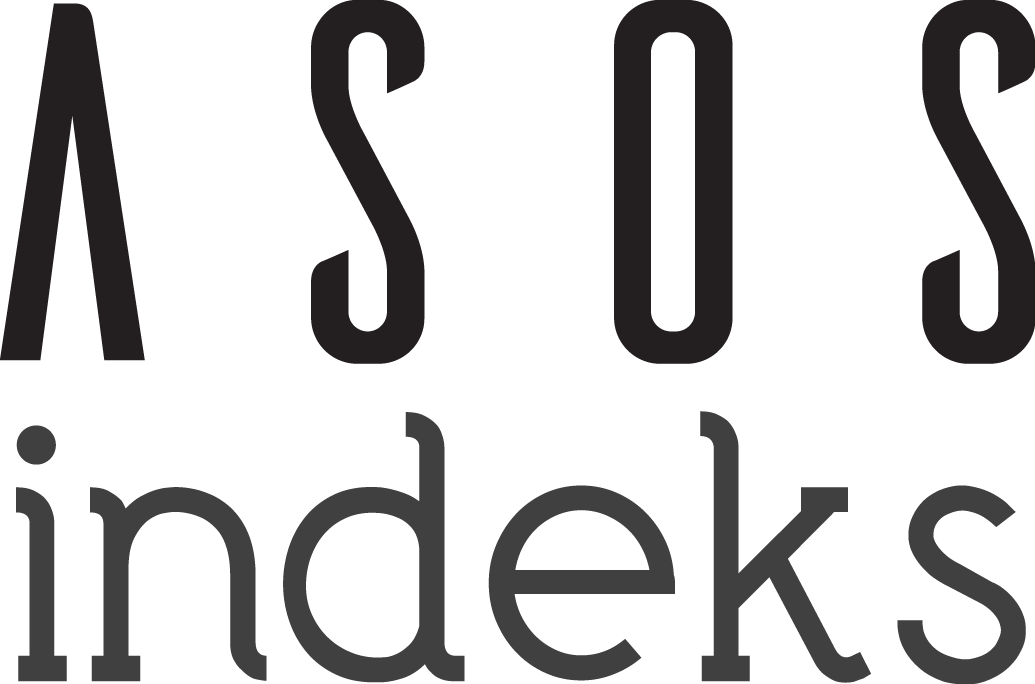Öz
Giriş: Yoğun bakım ünitemizde bir yıllık kardiyak arrest vakaları incelendi. Kardiyak arrest sonrası süreç ve bu sürece etkili faktörlerin retrospektif incelenmesi amaçlandı.
Materyal ve Metod: 2018 Ocak-2019 Ocak tarihleri arasında Anesteziyoloji ve Reanimasyon kliniği yoğun bakım ünitesinde kardiyak arrest tanılı 74 hasta çalışmaya dahil edilmiştir. Hastalar yoğun bakım ünitesine kardiak arrest sonrası kabul edilen (arrest gelen) ve yoğun bakım tedavisi sürerken kardiyak arrest olan (arrest olan) olarak ayrıldı. Hastaların demografik verileri, kardiyak arrest etiyolojisi, eşlik eden hastalıkları, yoğun bakımda yatış süreleri ve yoğun bakımdan çıkış şekli not edildi.
Bulgular: Arrest sonrası en kısa yatış süresi 1 gün olup en uzun 902 güdü. Ortalama yatış süresi 47,2 gündü. Arrest olan grupta hastaların yaşları arrest gelen gruptan anlamlı (p <0.05) olarak daha yüksekti. Diğer parametreler açısından gruplar arasında fark saptanmadı.
Sonuç: Çalışmamızda post kardiak arrest sendromu ile takip ettiğimiz hastalarda 75 yaş üstü olmanın ve arreste neden olan bir nörolojik etiyolojinin varlığının sağ kalım şansını azalttığını tespit ettik. Post kardiyak arrest sendromu ile yoğun bakımda takip edilen hastalarda uzun yatış süreleri gözlemlenebilmektedir. Post kardiyak arrest sendromlu sekelli hastaların genel durumu stabillenince hastaların palyatif bakım merkezine veya eve çıkışının hızlandırılması gerekmektedir. Aksi halde uzun yatış süreleri yoğun bakım yatağının etkili kullanılamamasına sebep olmaktadır.
Anahtar Kelimeler
Etik Beyan
Çalışma Yüzüncü Yıl Üniversitesi Girişimsel Olmayan Klinik Araştırmaları Etik Kurulu tarafından onaylanmıştır (Karar no:2023/07-12 Tarih:14.07.2023)
Destekleyen Kurum
Çalışmayı destekleyen herhangi bir kuruluş yoktur
Kaynakça
- Akahane M, Ogawa T, Koike S, Tanabe S, Horiguchi H, Mizoguchi T, et al. (2011). The effects of sex on out-of-hospital cardiac arrest outcomes. The American Journal of Medicine, 124(4), 325-333.
- Altınsoy S, Akelma, FK, Çatalca S, Arslan M, Özkan D, Sayın MM, ve ark. (2020). Kardiyak arrest sonrası spontan dolaşımı geri dönen hastalarda hedefe yönelik hipotermi uygulamasının etkileri. Çukurova Anestezi ve Cerrahi Bilimler Dergisi, 3(1), 1-12.
- Booth CM, Boone RH, Tomlinson G, Detsky AS. (2004). Is this patient dead, vegetative or severely neurologically impaired? Assessing outcome for comatose survivors of cardiac arrest. JAMA, 291, 870-879.
- Danciu SC, Klein L, Hosseini MM, Ibrahim L, Coyle BW, Kehoe RF. (2004). A predictive model for survival after in-hospital cardiopulmonary arrest. Resuscitation, 62(1), 35-42.
- Dragancea I, Rundgren M, Englund E, Friberg H, Cronberg T. (2013). The influence of induced hypothermia and delayed prognostication on the mode of death after cardiac arrest. Resuscitation, 84 337–342.
- Geçmen, Ç, Kahyalıoğlu M, Kalaycıoğlu A (2018). Üçüncü basamak bir merkezden kardiyak arrest serisi. Koşuyolu Heart Journal, 21(1), 16-20.
- Girotra S, Chan PS, Bradley SM. (2015). Post-resuscitation care following out-of-hospital and in-hospital cardiac arrest. Heart, 101(24), 1943-1949.
- Goh WC, Heath PD, Ellis SJ, Oakley PA. (2002). Neurological outcome prediction in a Cardiorespiratory arrest survivor. British Journal of Anaesthesia, 88, 719-22.
- Hessulf F, Karlsson T, Lundgren P, Aune S, Strömsöe A, Källestedt M, et al. (2018). Factors of importance to 30-day survival after in-hospital cardiac arrest in Sweden–A population-based register study of more than 18,000 cases. International Journal of Cardiology, 255, 237-242.
- Kekeç Z, Koç F, Büyük S. (2009). Acil serviste yaşlı hasta yatışlarının gözden geçirilmesi. Akademik Acil Tıp Dergisi, 8(3), 21-24.
- Lemiale V, Dumas F, Mongardon N, Giovanetti O, Charpentier J, Chiche JD, et al. (2013) Intensive care unit mortality after cardiac arrest: the relative contribution of shock and brain injury in a large cohort. Intensive Care Medicine, 39, 1972-1980.
- Marco CA, Schears RM. (2003). Prehospital resuscitation practices: a survey of prehospital providers ethical issues of resuscitation. Journal of Emergency Medicine, 24, 101-106.
- Monsieurs KG, Nolan JP, Bossaert LL, Greif R, Maconochie IK, Nikolaou NI, et al. (2015). European Resuscitation Council Guidelines for Resuscitation. Resuscitation, 95, 1-80.
- Parlakgümüs, A, Nursal TZ, Yorganci K. (2010). Bir cerrahi yogun bakim ünitesinde kardiopulmoner resüsitasyon sonuçları. Dahili ve Cerrahi Bilimler Yogun Bakim Dergisi, 1(2), 40-44.
- Rea TD, Eisenberg MS, Becker LJ, Murray JA, Hearne T. (2003). Temporal trends in sudden cardiac arrest: a 25-year emergency medical services perspective. Circulation, 107(22), 2780-2785.
- Sandroni, C, Ferro G, Santangelo S, Tortora F, Mistura L, Cavallaro F. (2004). In-hospital cardiac arrest: survival depends mainly on the effectiveness of the emergency response. Resuscitation, 62(3), 291-297.
- Schoerkhuber W, Kittler H, Sterz F, Behringer W, Holzer M, Frossard M, et al. (1999). Time course of serum Neuron-Spesific Enolase, A predictor of neurological outcome in patients resuscitated from cardiac arrest. Stroke, 30, 1598-603.
- Hwai H, Wu CK, Chi CY, Tsai MS, Huang CH. (2025). Association between the clinical frailty scale and neurological outcomes in out-of-hospital cardiac arrest: A retrospective study. Reviews in Cardiovascular Medicine, 26(3), 26333. van Gijn MS, Frijns D, van de Glind EM, van Munster BC, Hamaker ME. (2014). The chance of survival and the functional outcome after in-hospital cardiopulmonary resuscitation in older people: a systematic review. Age and Ageing, 43(4), 456-463.
- van Walraven C, Forster AJ, Parish DC, Dane FC, Chandra KD, Durham MD, et al. (2001) Validation of a clinical decision aid to discontinue in-hospital cardiac arrest resuscitations. JAMA, 285(12), 1602-1606. Weisfeldt ML, Becker LB. (2002). Resuscitation after cardiac arrest A 3-phase time sensitive model. JAMA, 288, 3035-8.
- Wils, EJ, Van Den Berg T, van Bommel J. (2015). Current practice of target temperature management post-cardiac arrest in The Netherlands, a post-TTM trial survey. Resuscitation, 97, e1-e2.
Öz
Kaynakça
- Akahane M, Ogawa T, Koike S, Tanabe S, Horiguchi H, Mizoguchi T, et al. (2011). The effects of sex on out-of-hospital cardiac arrest outcomes. The American Journal of Medicine, 124(4), 325-333.
- Altınsoy S, Akelma, FK, Çatalca S, Arslan M, Özkan D, Sayın MM, ve ark. (2020). Kardiyak arrest sonrası spontan dolaşımı geri dönen hastalarda hedefe yönelik hipotermi uygulamasının etkileri. Çukurova Anestezi ve Cerrahi Bilimler Dergisi, 3(1), 1-12.
- Booth CM, Boone RH, Tomlinson G, Detsky AS. (2004). Is this patient dead, vegetative or severely neurologically impaired? Assessing outcome for comatose survivors of cardiac arrest. JAMA, 291, 870-879.
- Danciu SC, Klein L, Hosseini MM, Ibrahim L, Coyle BW, Kehoe RF. (2004). A predictive model for survival after in-hospital cardiopulmonary arrest. Resuscitation, 62(1), 35-42.
- Dragancea I, Rundgren M, Englund E, Friberg H, Cronberg T. (2013). The influence of induced hypothermia and delayed prognostication on the mode of death after cardiac arrest. Resuscitation, 84 337–342.
- Geçmen, Ç, Kahyalıoğlu M, Kalaycıoğlu A (2018). Üçüncü basamak bir merkezden kardiyak arrest serisi. Koşuyolu Heart Journal, 21(1), 16-20.
- Girotra S, Chan PS, Bradley SM. (2015). Post-resuscitation care following out-of-hospital and in-hospital cardiac arrest. Heart, 101(24), 1943-1949.
- Goh WC, Heath PD, Ellis SJ, Oakley PA. (2002). Neurological outcome prediction in a Cardiorespiratory arrest survivor. British Journal of Anaesthesia, 88, 719-22.
- Hessulf F, Karlsson T, Lundgren P, Aune S, Strömsöe A, Källestedt M, et al. (2018). Factors of importance to 30-day survival after in-hospital cardiac arrest in Sweden–A population-based register study of more than 18,000 cases. International Journal of Cardiology, 255, 237-242.
- Kekeç Z, Koç F, Büyük S. (2009). Acil serviste yaşlı hasta yatışlarının gözden geçirilmesi. Akademik Acil Tıp Dergisi, 8(3), 21-24.
- Lemiale V, Dumas F, Mongardon N, Giovanetti O, Charpentier J, Chiche JD, et al. (2013) Intensive care unit mortality after cardiac arrest: the relative contribution of shock and brain injury in a large cohort. Intensive Care Medicine, 39, 1972-1980.
- Marco CA, Schears RM. (2003). Prehospital resuscitation practices: a survey of prehospital providers ethical issues of resuscitation. Journal of Emergency Medicine, 24, 101-106.
- Monsieurs KG, Nolan JP, Bossaert LL, Greif R, Maconochie IK, Nikolaou NI, et al. (2015). European Resuscitation Council Guidelines for Resuscitation. Resuscitation, 95, 1-80.
- Parlakgümüs, A, Nursal TZ, Yorganci K. (2010). Bir cerrahi yogun bakim ünitesinde kardiopulmoner resüsitasyon sonuçları. Dahili ve Cerrahi Bilimler Yogun Bakim Dergisi, 1(2), 40-44.
- Rea TD, Eisenberg MS, Becker LJ, Murray JA, Hearne T. (2003). Temporal trends in sudden cardiac arrest: a 25-year emergency medical services perspective. Circulation, 107(22), 2780-2785.
- Sandroni, C, Ferro G, Santangelo S, Tortora F, Mistura L, Cavallaro F. (2004). In-hospital cardiac arrest: survival depends mainly on the effectiveness of the emergency response. Resuscitation, 62(3), 291-297.
- Schoerkhuber W, Kittler H, Sterz F, Behringer W, Holzer M, Frossard M, et al. (1999). Time course of serum Neuron-Spesific Enolase, A predictor of neurological outcome in patients resuscitated from cardiac arrest. Stroke, 30, 1598-603.
- Hwai H, Wu CK, Chi CY, Tsai MS, Huang CH. (2025). Association between the clinical frailty scale and neurological outcomes in out-of-hospital cardiac arrest: A retrospective study. Reviews in Cardiovascular Medicine, 26(3), 26333. van Gijn MS, Frijns D, van de Glind EM, van Munster BC, Hamaker ME. (2014). The chance of survival and the functional outcome after in-hospital cardiopulmonary resuscitation in older people: a systematic review. Age and Ageing, 43(4), 456-463.
- van Walraven C, Forster AJ, Parish DC, Dane FC, Chandra KD, Durham MD, et al. (2001) Validation of a clinical decision aid to discontinue in-hospital cardiac arrest resuscitations. JAMA, 285(12), 1602-1606. Weisfeldt ML, Becker LB. (2002). Resuscitation after cardiac arrest A 3-phase time sensitive model. JAMA, 288, 3035-8.
- Wils, EJ, Van Den Berg T, van Bommel J. (2015). Current practice of target temperature management post-cardiac arrest in The Netherlands, a post-TTM trial survey. Resuscitation, 97, e1-e2.
Ayrıntılar
| Birincil Dil | Türkçe |
|---|---|
| Konular | Anesteziyoloji, Yoğun Bakım |
| Bölüm | Orijinal Araştırma Makaleleri |
| Yazarlar | |
| Erken Görünüm Tarihi | 30 Ağustos 2025 |
| Yayımlanma Tarihi | 30 Ağustos 2025 |
| Gönderilme Tarihi | 9 Ocak 2025 |
| Kabul Tarihi | 12 Mayıs 2025 |
| Yayımlandığı Sayı | Yıl 2025 Cilt: 18 Sayı: 2 |




Van Health Sciences Journal (Van Sağlık Bilimleri Dergisi) başlıklı eser bu Creative Commons Atıf-Gayri Ticari 4.0 Uluslararası Lisansı ile lisanslanmıştır.







